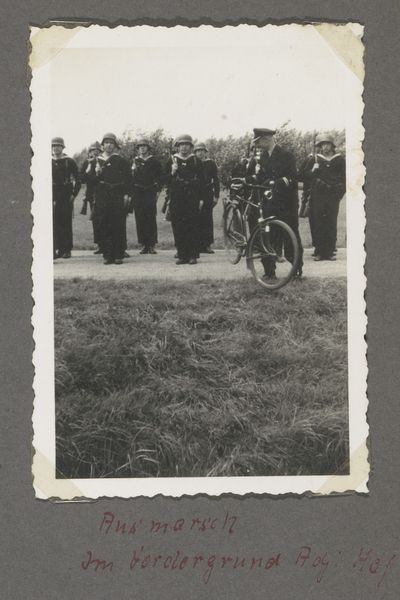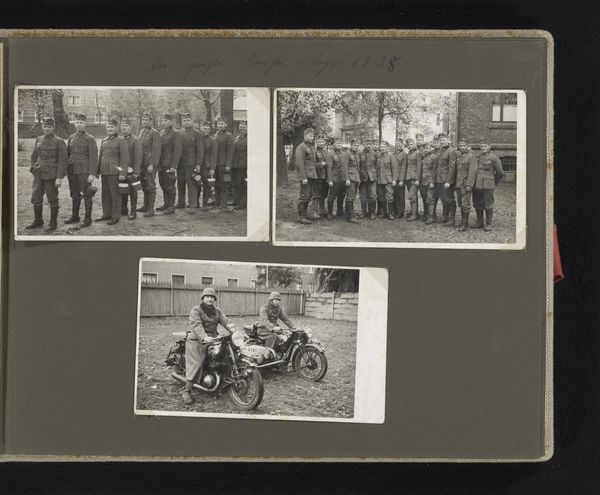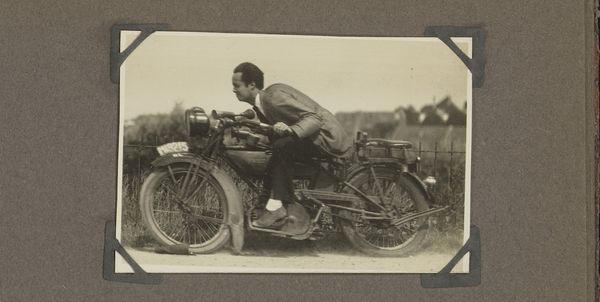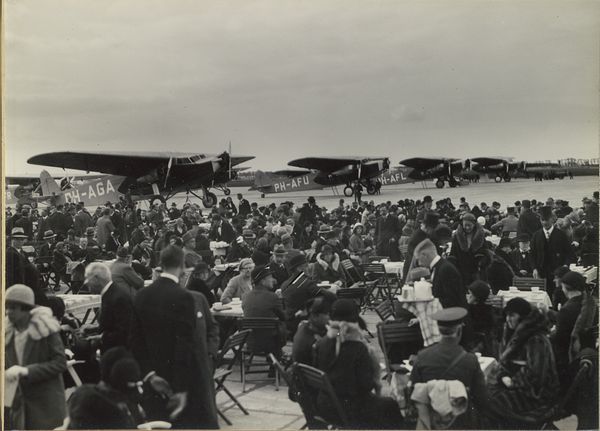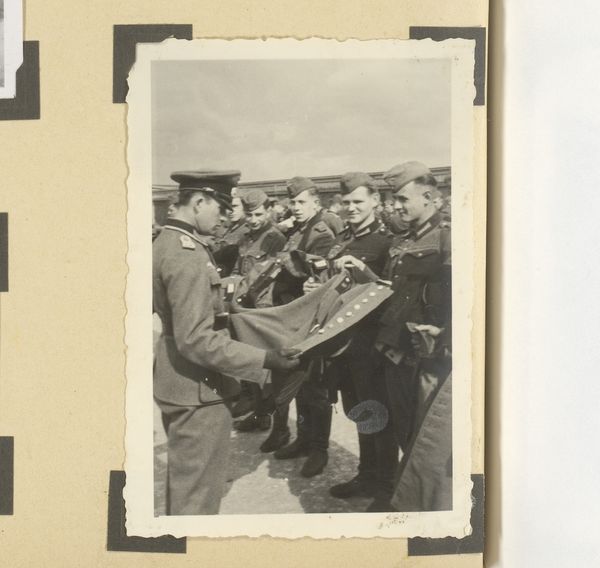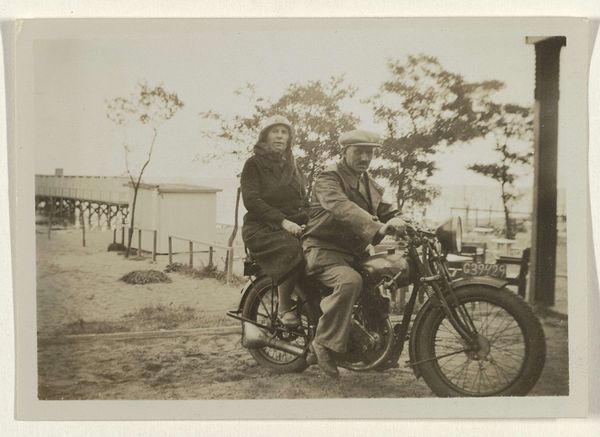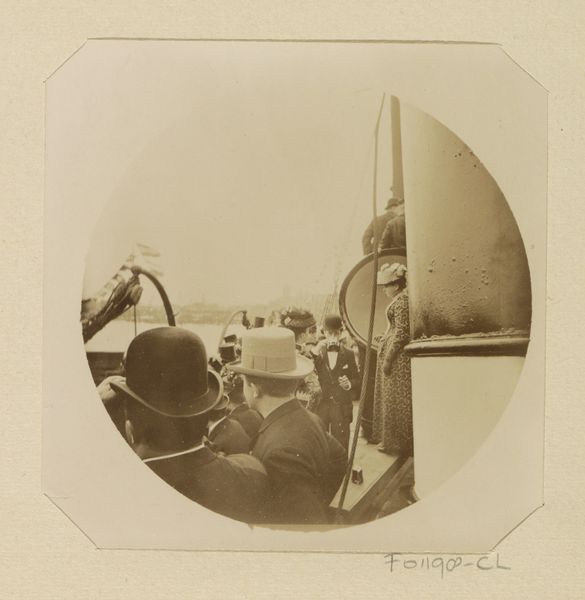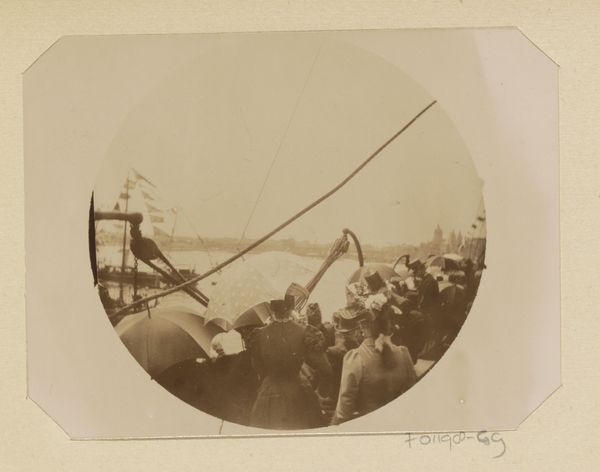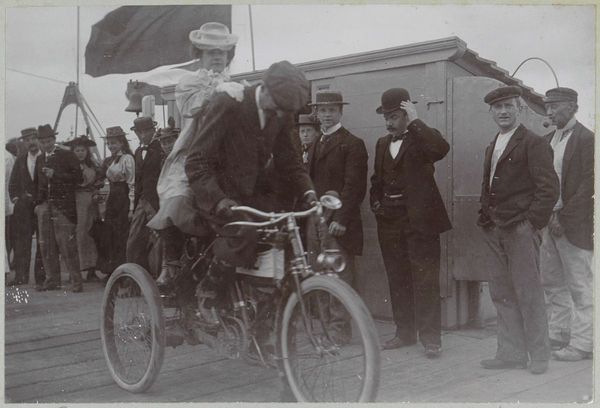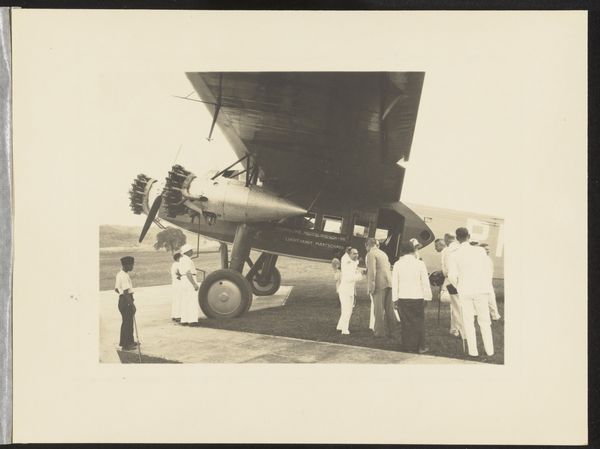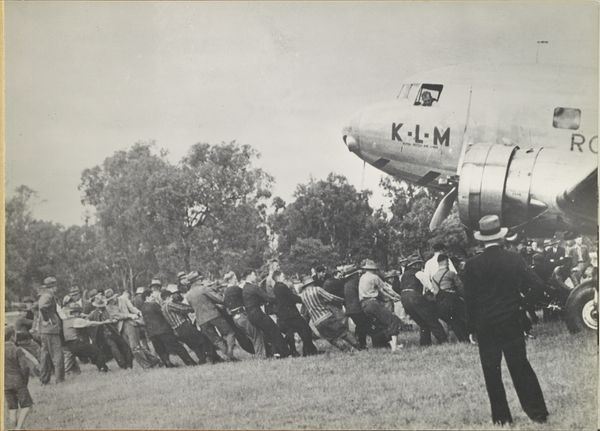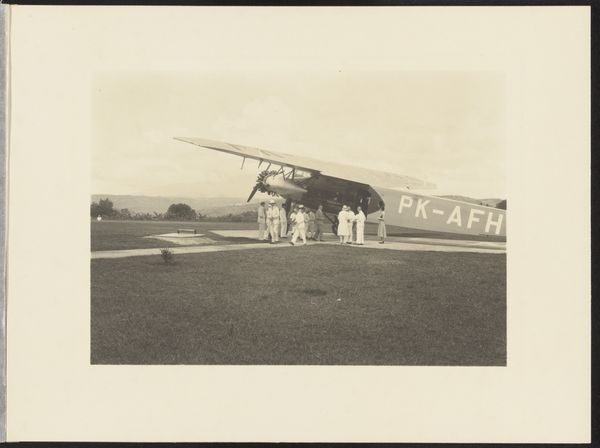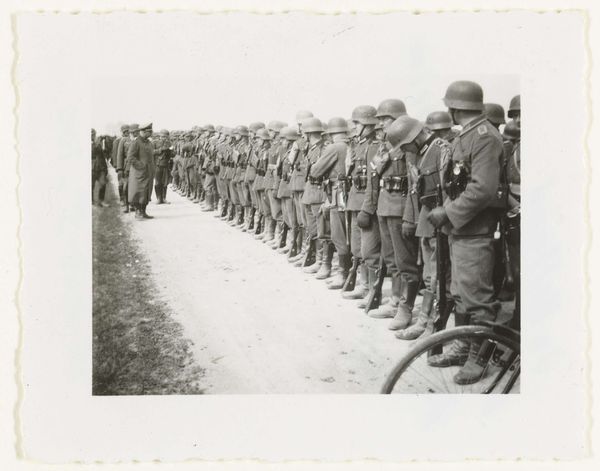
print, photography, gelatin-silver-print
#
print photography
# print
#
landscape
#
archive photography
#
photography
#
historical photography
#
gelatin-silver-print
Dimensions: height 6 cm, width 8.5 cm
Copyright: Rijks Museum: Open Domain
Editor: This gelatin silver print, titled "Neergeschoten Duits transportvliegtuig" or "Shot Down German Transport Plane", was taken anonymously sometime between 1940 and 1945. It gives me an unsettling feeling, like I’m looking at a mundane moment somehow intertwined with something much larger and tragic. What details stand out to you in this piece? Curator: The materiality speaks volumes. Gelatin silver prints, especially from this era, were mass-produced; they were tools of documentation, propaganda even. So we see a downed aircraft – German, evident from the tail markings – juxtaposed with these civilians on motorcycles. What were they doing? Were they scavenging, celebrating, or simply observing? The photograph itself is evidence; of a victory, of a loss, and importantly of the ready availability of such images. Who controlled that flow and what messages did the authorities seek to disseminate by displaying such pictures of the machinery of war? Editor: That’s interesting! I hadn’t considered the potential for the image to be used as propaganda, showing readily the spoils of war and making a statement about resources and production, the aircraft destroyed and the motorcycles being used by the populace. Curator: Precisely. Consider the labour involved in manufacturing both the aircraft and these motorcycles. The plane represents German industrial might brought down; but this photograph is not really about that broken symbol, it focuses attention on its consumption by others. We can reflect upon the industrial powers locked in an embrace to destruction and upon whose soil the destruction lands, so vividly. It gives material evidence of both manufacture and the control of raw materials to build these machines of war. Who has these resources and where do these wars end? Editor: Thinking about it that way completely changes how I see this photograph. I was focused on the historical event, but now I’m considering the complex relationships surrounding its creation and the implied socioeconomic factors involved in its distribution. Curator: It is not simply a picture of war; it is the means of that picture, the labour involved in producing the materials depicted and its role in consumption which create a powerful visual record and important piece of evidence of these times.
Comments
No comments
Be the first to comment and join the conversation on the ultimate creative platform.
